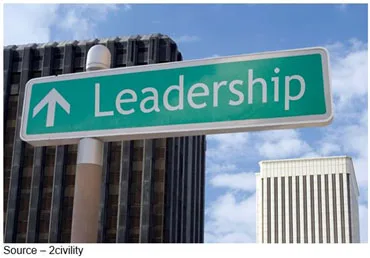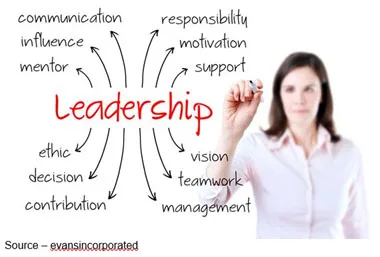Good Leaders Constantly Evaluate Themselves, Personal Growth
 Building loyalty for your organization, your products and your goals isn’t easy. When it feels as though the entire world is on hold and you can’t walk down the hall and talk with someone it’s even more difficult.
Building loyalty for your organization, your products and your goals isn’t easy. When it feels as though the entire world is on hold and you can’t walk down the hall and talk with someone it’s even more difficult.
An essential component is to develop a successful team, which requires good leadership.
The best leaders constantly reach outside themselves examining, evaluating and improving their skills to help their teams deliver the extra effort and support their firms need to compete in today’s tough, aggressive, ruthless and decidedly uncertain market.
It’s never fun, never easy.
For example, after three months of developing and discussing a special group of prospects in your best salesperson’s territory, they still haven’t been contacted–even though everyone agrees that the goal for the quarter is to expand new business.
What do you do?
More likely than not, you lay down the law. Tell the salesperson that by the end of the week, you want all of those prospects contacted and a report in your inbox.
On Friday afternoon, the report hits your screen and three new accounts have been signed.
The job was done … it was done on time. But was it good leadership?
Some will say yes, the end justifies the means.
Others would contend that it wasn’t good leadership because the results were achieved not by self-motivation but under duress.
The best leadership would have resulted in the salesperson wanting to do the job to support the entire team, rather than being forced to do it.
So, is there a “right” kind of leadership?
It’s not “right” to take over responsibility that should properly be assumed by another member of your organization. When you do that, you lower his or her self-esteem.
It’s not “right” to issue edicts. The total scope of the program should be discussed with the individual involved.
Forcing obedience is never right–it destroys initiative. But, as our example illustrated, there is no “best way” to handle leadership.
There is no simple list of dos and don’ts to follow.
Every individual and every circumstance calls for a different type of leadership.
Forms of Leadership
There are three major methods of handling people:
- Autocratic — As the manager, you assume full responsibility for all actions— individual and group. You’re seeking obedience to specific orders. You determine policy and decision-making as your prerogative.
Let’s say you’ve decided you want to test-market a product or service to see if there’s a need, if a market really exists, how it should be priced and the competitive situation.
You prepare all of the necessary instructions and announce the project to your staff. It’s not a matter that’s open for discussion.
Sure, there are members of the organization who will predict failure of the project. It’s your job to talk to them individually, taking full responsibility for the outcome, and outlining the benefits you expect to be achieved. You divert arguments and concentrate on how your staff can help get the information needed.
If all else fails, you will have to demand that everyone focuses on getting the task accomplished.
- Democratic — You seek ideas, suggestions and input through discussions and conclusions. This is a great way to establish team goals.
But let’s go back to our test-marketing example and assume that the product or service was needed to capture an even greater portion of the total market. In the meeting, allow employees to contribute their ideas.
The result should be a more productive meeting.
When possible, good leaders treat individual problems/concerns on a democratic basis.
For example, you’re selling to both consumers and commercial accounts. One of your people may have more talent in business situations than with consumers who come in the door. You need to convince the individual that he or she will be more successful selling to businesses rather than simply assigning them to the job.
Then, it’s only a matter of discussing how to manage the territory and selling effort.
- Free-Rein — You exercise comparatively little direct control, but act as the prime source of information, suggestions and guidance.
This approach is best when you feel your staff is well-trained, responsible and professional. It’s necessary in sales organizations where people have to make immediate decisions or if sales people are in remote areas and have little direct supervision.
Free-rein leadership is used by most hardware/software manufacturers and rep organizations. Within limits, individuals set their own goals. And with the right people in place results in outstanding performance.
There isn’t a best method to lead … only the most appropriate for a particular occasion. That means planning your actions for a given situation.
You can’t choose between autocratic and democratic leadership. That’s like making a golfer choose either woods or irons.
During any golf game, they’re all used. Decide on the type of leadership that is needed based on:
- Individual Personality — Some people only perform really well when a certain type of leadership is used.
For example, an aggressive individual does better if you are understanding but autocratic.
Recognize their aggression and control it.
An individual that is aggressive as well as cooperative will perform better if your leadership is democratic or free-reining. Since they are often perfectionists and enjoy accomplishment for its own sake, their self- assertiveness may be very constructive.
Individualists are most productive when they can operate in a free-reining environment. This is assuming that they know their job.
If you have folks who are working on their own agendas, then you have to pay special attention to reigning them in and try to help them understand they are part of a team not prima donnas. The individual can be a valuable asset but can also be a danger to the entire organization and its goals. If they diminish the strengths and accomplishments of other team members, you have an issue that has to be addressed.
If you’re having leadership problems, it’s time to step back and review the personality characteristics of each of your people. Working with each of them, you can determine if you have to modify your leadership style … or the individual isn’t worth the effort.
But don’t think one review will solve your problems. Constantly evaluate your people, your programs and yourself.
- Situation — Changes in the market, a customer crises, new products and policy changes often place new demands on your leadership approach.
If quick decisions and fast action are necessary, you’re going to have to be autocratic. If you lack information or question your intuition, use the more democratic approach. After all, the people who are on the front line contacting customers or prospects can be important sources of input to help make the best possible decision.
- Organizational Flavor — The total make-up of your organization reflects the type of leadership that should be used.
Sometimes group and individual needs are quite different.
If your organization has a large number of experienced, cooperative people, then democratic leadership will work.
If you have a dispersed organization that seldom meets and is made up of strong individualists, a mixture of the leadership methods–depending on each situation–will be best.
If your staff is largely untrained and undisciplined, then autocratic leadership is a must. You have to be the firm and decisive force that quickly makes the organization productive.
If you have a highly trained and professional staff including good engineers, good software people and good sales people, then free-reining leadership will win out. These people are usually quite creative and will solve the problems they encounter. They require less guidance, just monitoring, as long as they focus on what is best for the entire team and company instead of their own self-importance to the company.
The success of your leadership depends on whether or not you’re flexible enough to recognize the need for the different types of leadership and are willing to change gears when necessary.
You have to determine what is best for each individual and each situation.
Just as you periodically evaluate each person who works for/with you, evaluate your leadership style.
In times of uncertainty, stay flexible but base your actions on what is best for the company and the entire team at that particular point in time.
# # #
Andy Marken – [email protected] – is an author of more than 600 articles on management, marketing, communications, industry trends in media & entertainment, consumer electronics, software and applications. Internationally recognized marketing/communications consultant with a broad range of technical and industry expertise especially in storage, storage management and film/video production fields. Extended range of relationships with business, industry trade press, online media and industry analysts/consultants.

